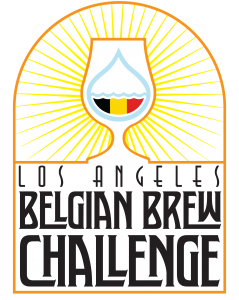26D – Belgian Dark Strong Ale
Overall Impression: A dark, complex, very strong Belgian ale with a delicious blend of malt richness, dark fruit flavors, and spicy elements. Complex, rich, smooth and dangerous.
Aroma: Complex, with a rich-sweet malty presence, significant esters and alcohol, and an optional light to moderate spiciness. The malt is rich and strong, and can have a deep bready-toasty quality often with a deep caramel complexity. The fruity esters are strong to moderately low, and can contain raisin, plum, dried cherry, fig or prune notes. Spicy phenols may be present, but usually have a peppery quality not clove-like; light vanilla is possible. Alcohols are soft, spicy, perfumy and/or rose-like, and are low to moderate in intensity. Hops are not usually present (but a very low spicy, floral, or herbal hop aroma is acceptable). No dark/roast malt aroma. No hot alcohols or solventy aromas.
Appearance: Deep amber to deep coppery-brown in color (dark in this context implies more deeply colored than golden). Huge, dense, moussy, persistent cream- to light tan-colored head. Can be clear to somewhat hazy.
Flavor: Similar to aroma (same malt, ester, phenol, alcohol, and hop comments apply to flavor as well). Moderately malty-rich on the palate, which can have a sweet impression if bitterness is low. Usually moderately dry to dry finish, although may be up to moderately sweet. Medium-low to moderate bitterness; alcohol provides some of the balance to the malt. Generally malty-rich balance, but can be fairly even with bitterness. The complex and varied flavors should blend smoothly and harmoniously. The finish should not be heavy or syrupy.
Mouthfeel: High carbonation but not sharp. Smooth but noticeable alcohol warmth. Body can range from medium-light to medium-full and creamy. Most are medium-bodied.
Comments: Authentic Trappist versions tend to be drier (Belgians would say more digestible) than Abbey versions, which can be rather sweet and full-bodied. Traditionally bottle-conditioned (or refermented in the bottle). Sometimes known as a Trappist Quadruple, most are simply known by their strength or color designation.
History: Most versions are unique in character reflecting characteristics of individual breweries, produced in limited quantities and often highly sought-after.
Characteristic Ingredients: Belgian yeast strains prone to production of higher alcohols, esters, and sometimes phenolics are commonly used. Impression of a complex grain bill, although many traditional versions are quite simple, with caramelized sugar syrup or unrefined sugars and yeast providing much of the complexity. Saazer-type, English-type or Styrian Goldings hops commonly used. Spices generally not used; if used, keep subtle and in the background.
Style Comparison: Like a larger dubbel, with a fuller body and increased malt richness. Not as bitter or hoppy as a tripel, but of similar strength.
Vital Statistics:
OG: 1.075 – 1.110
IBUs: 20 – 35
FG: 1.010 – 1.024
SRM: 12 – 22
ABV: 8.0 – 12.0%
Commercial Examples: Achel Extra Brune, Boulevard The Sixth Glass, Chimay Grande Réserve, Gouden Carolus Grand Cru of the Emperor, Rochefort 8 & 10, St. Bernardus Abt 12, Westvleteren 12
